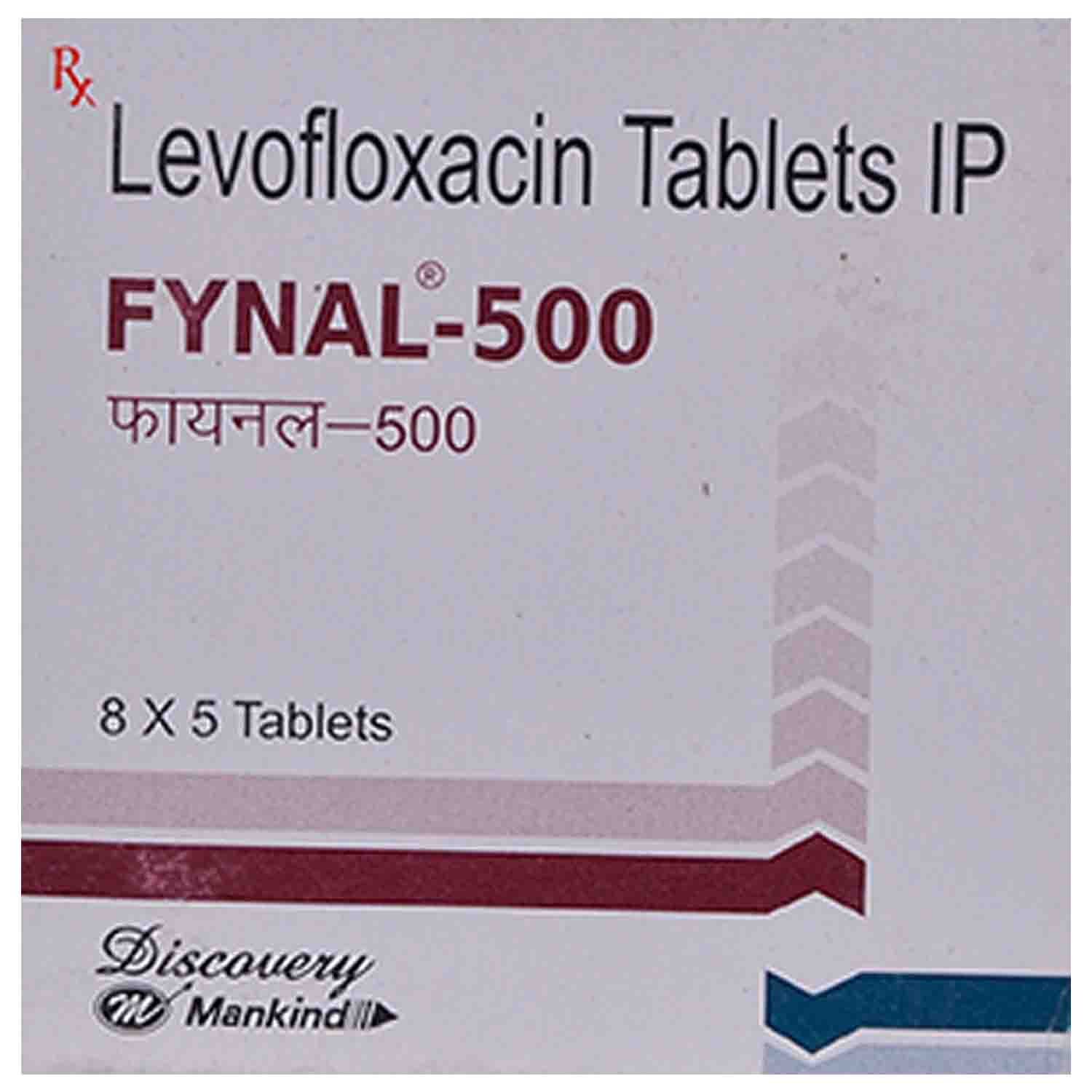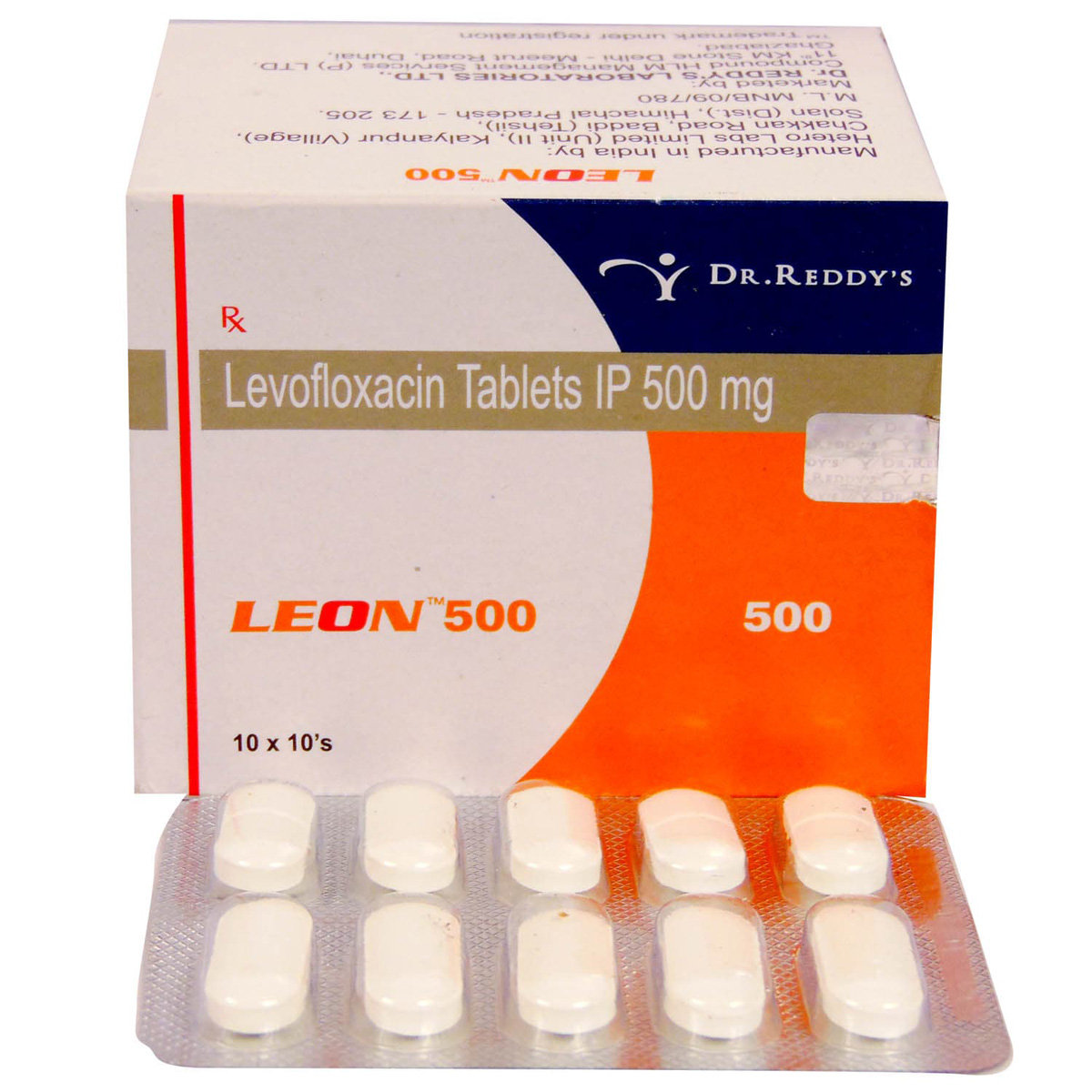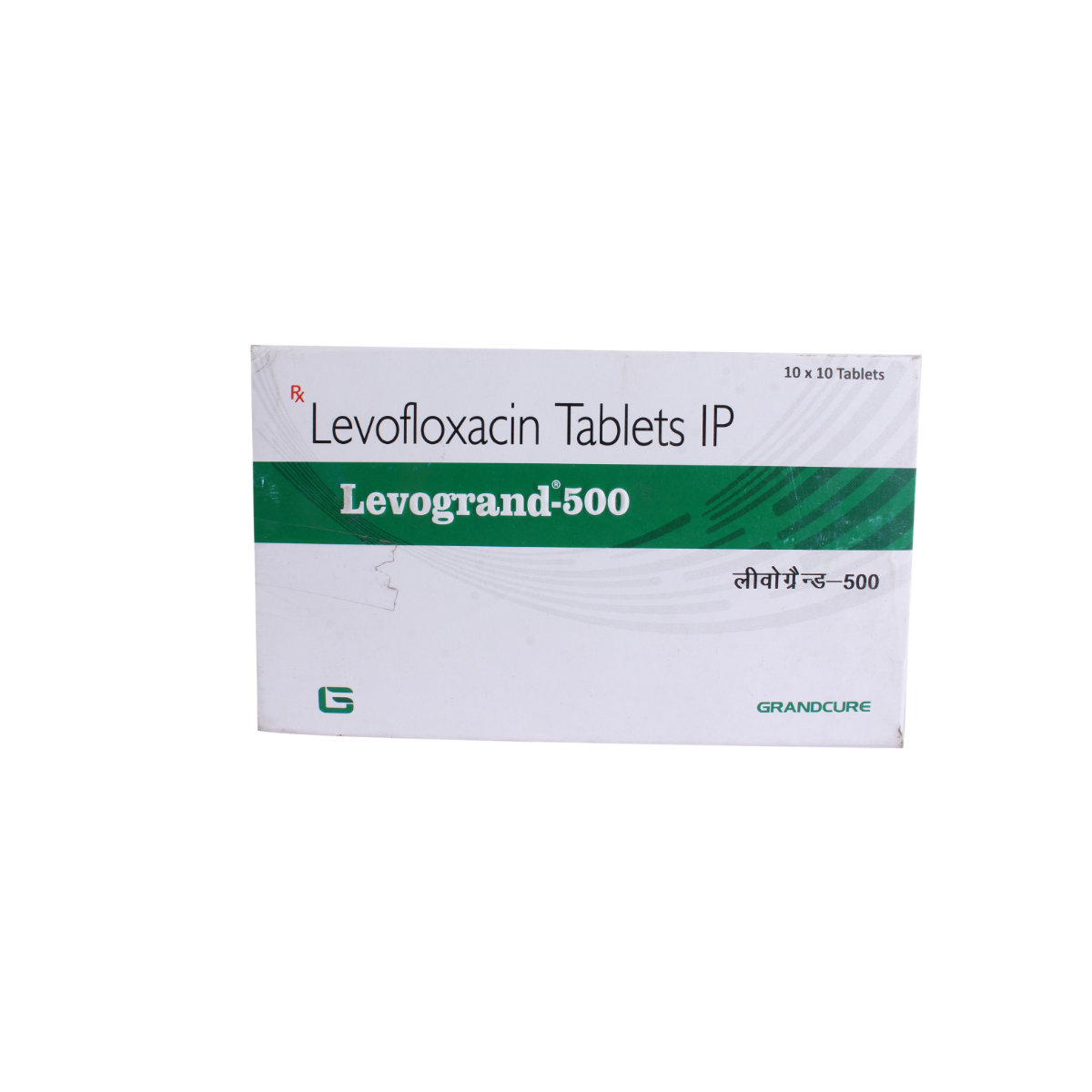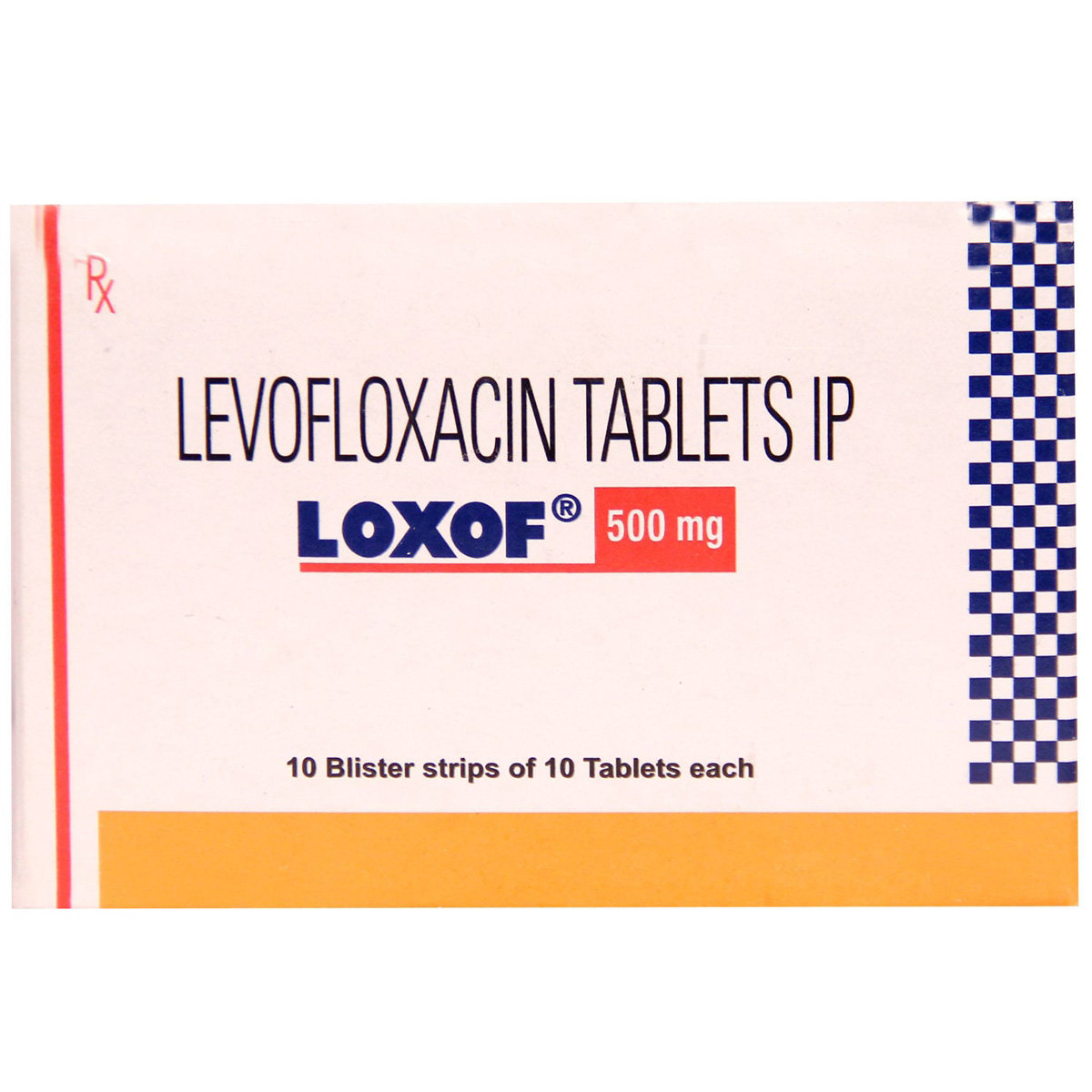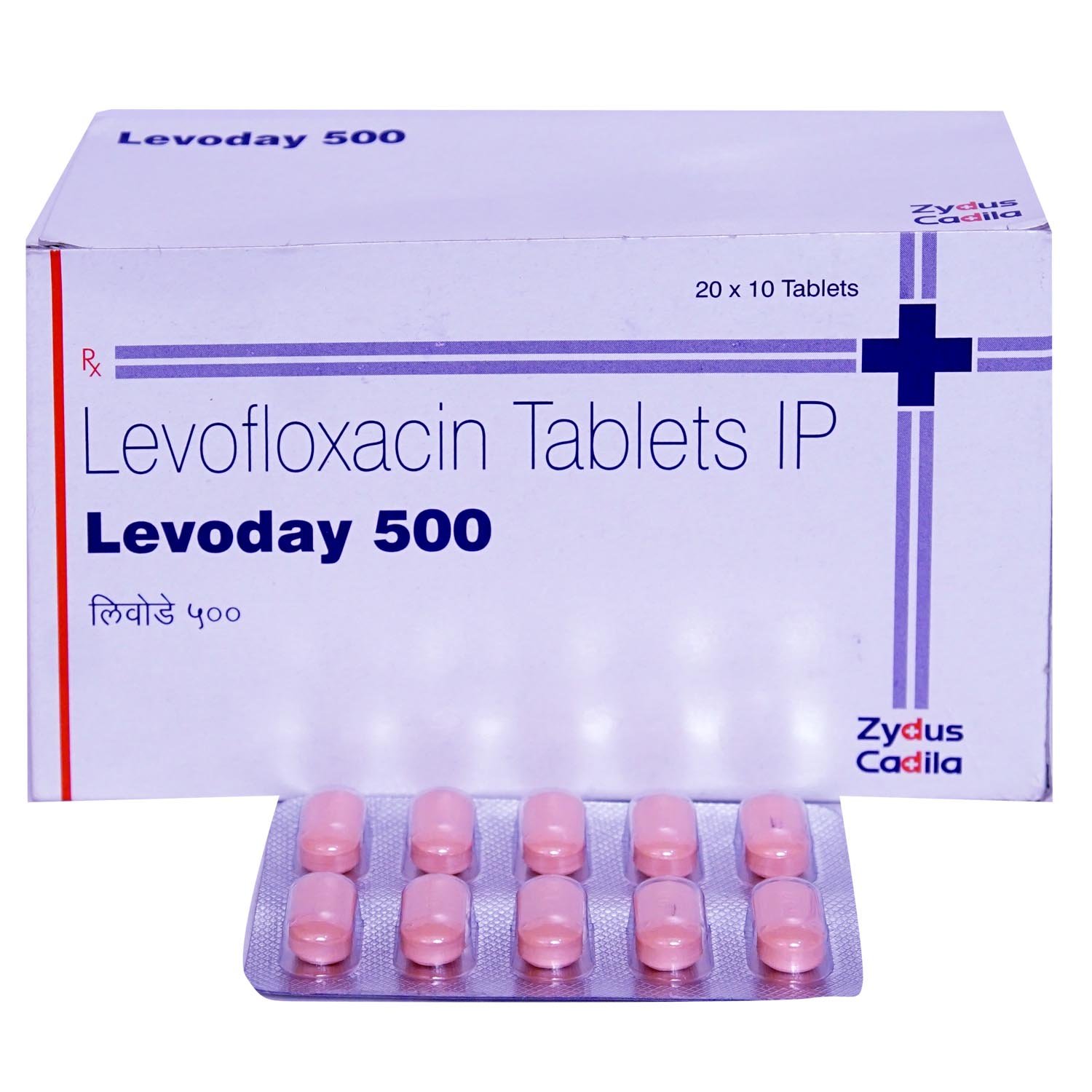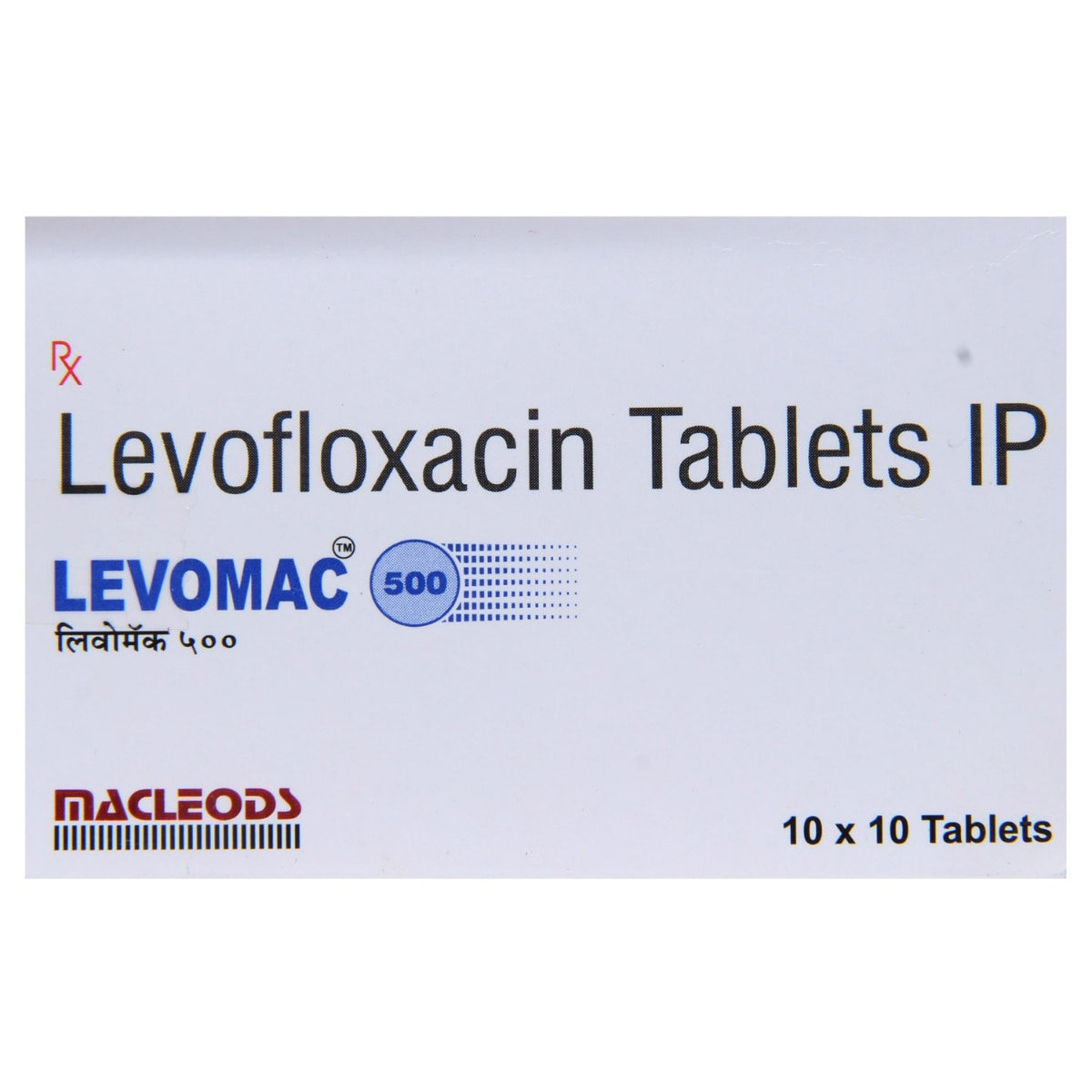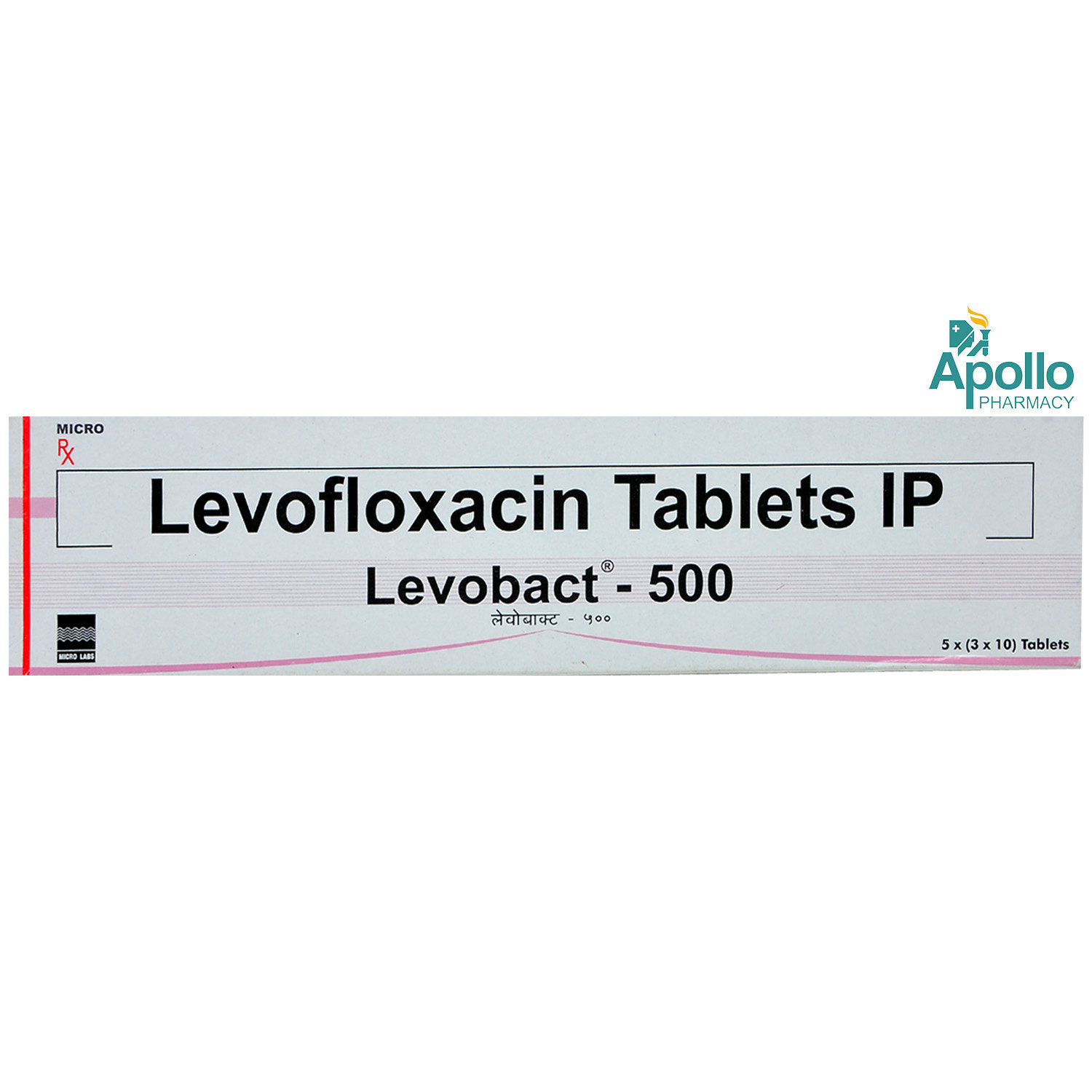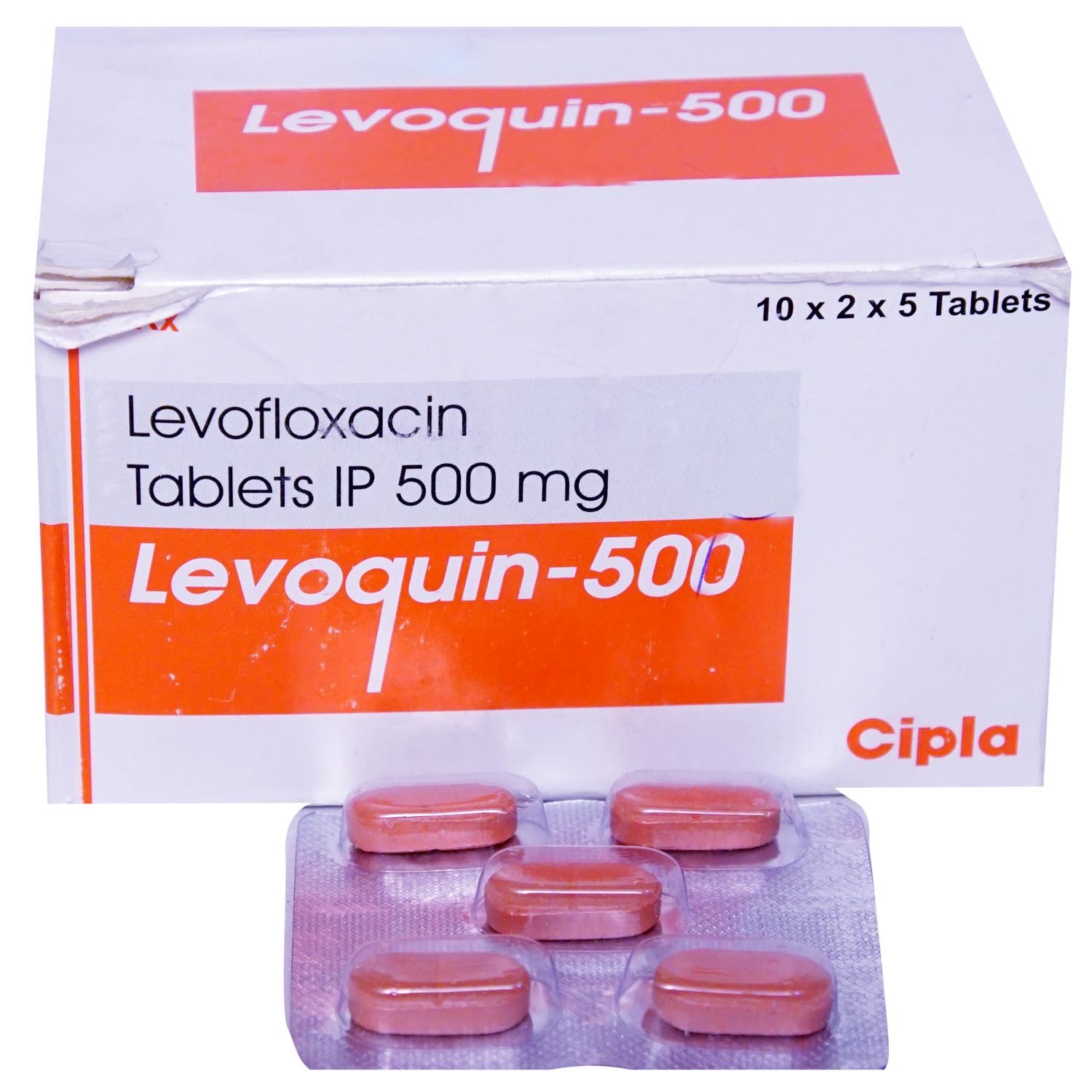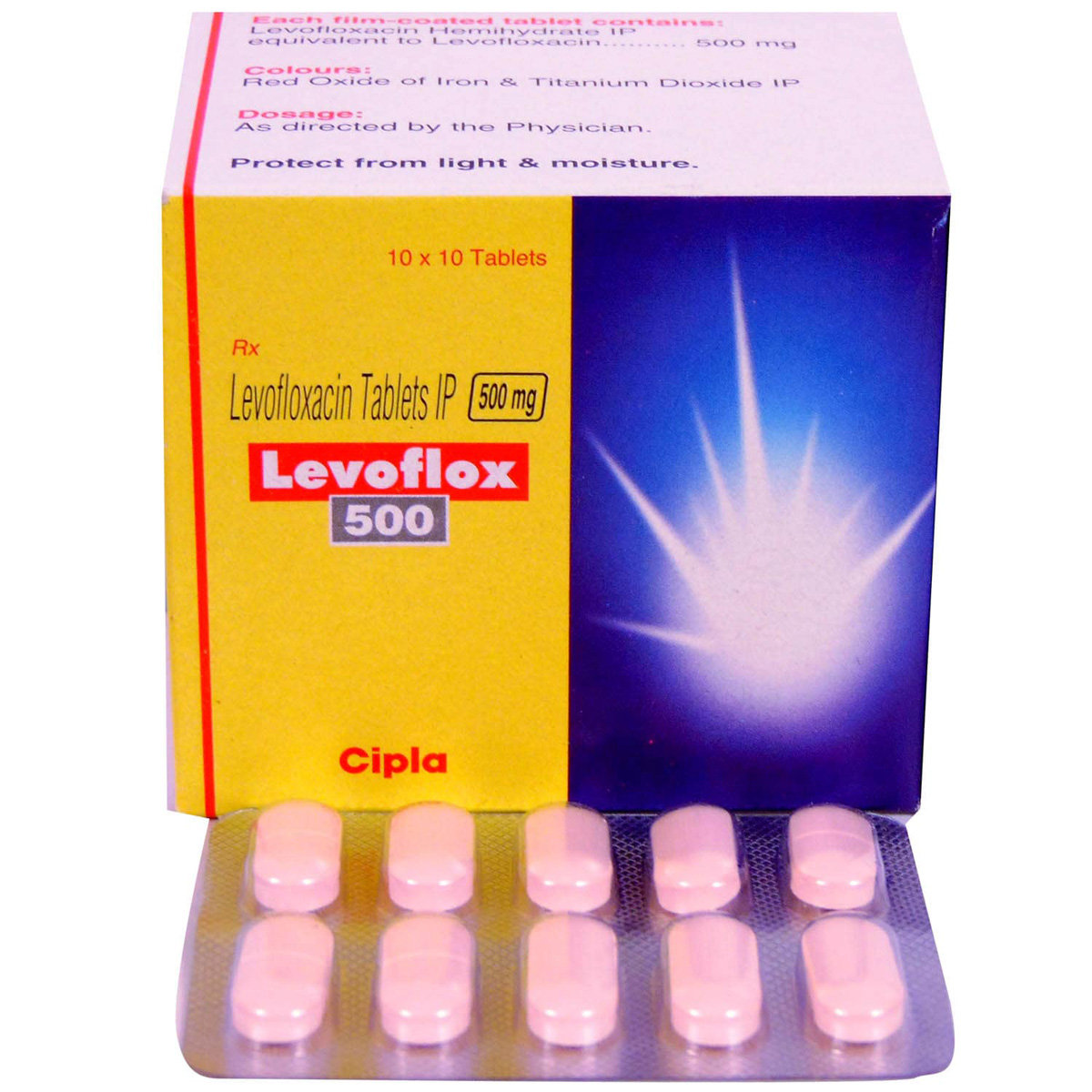Glevo 500 Tablet 10's
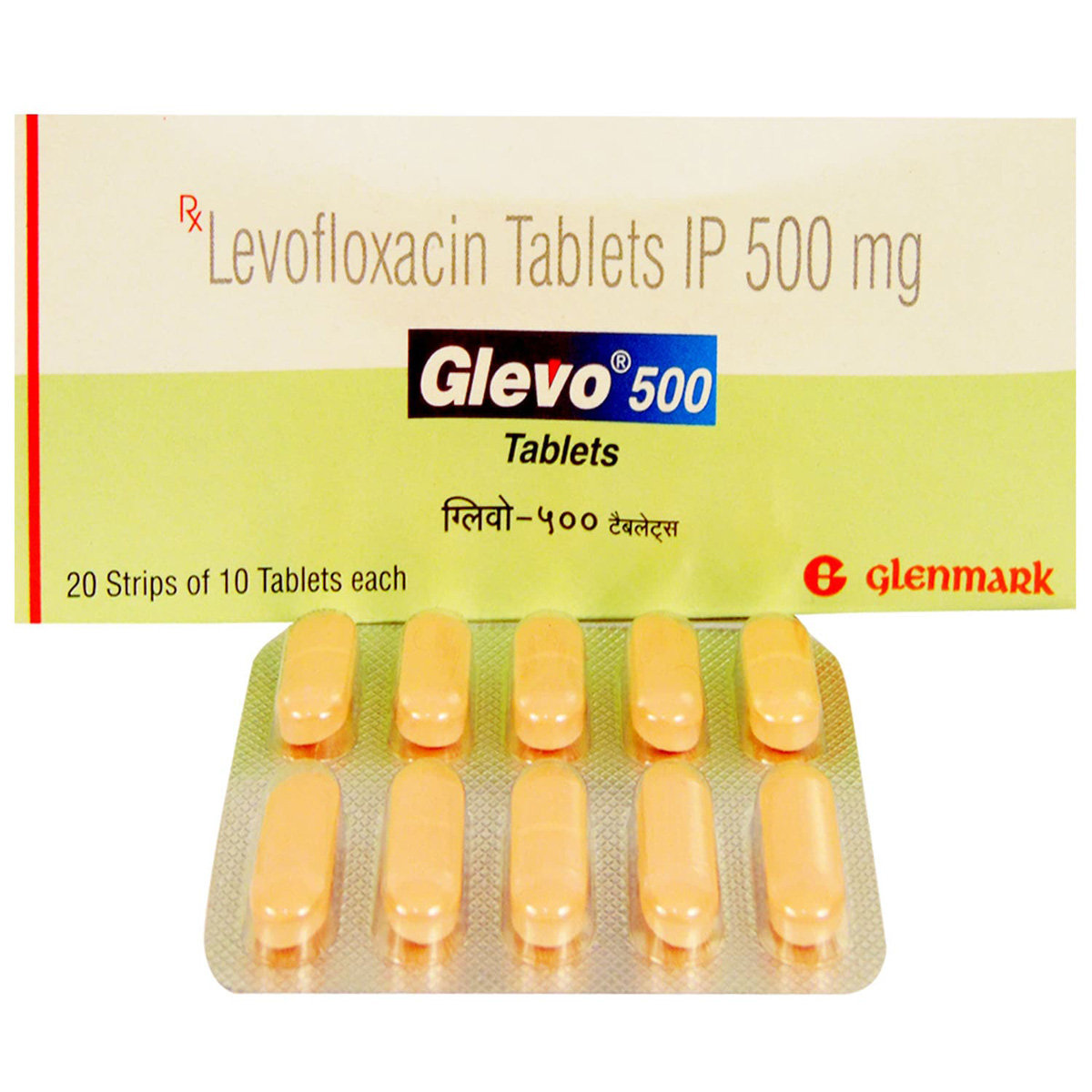
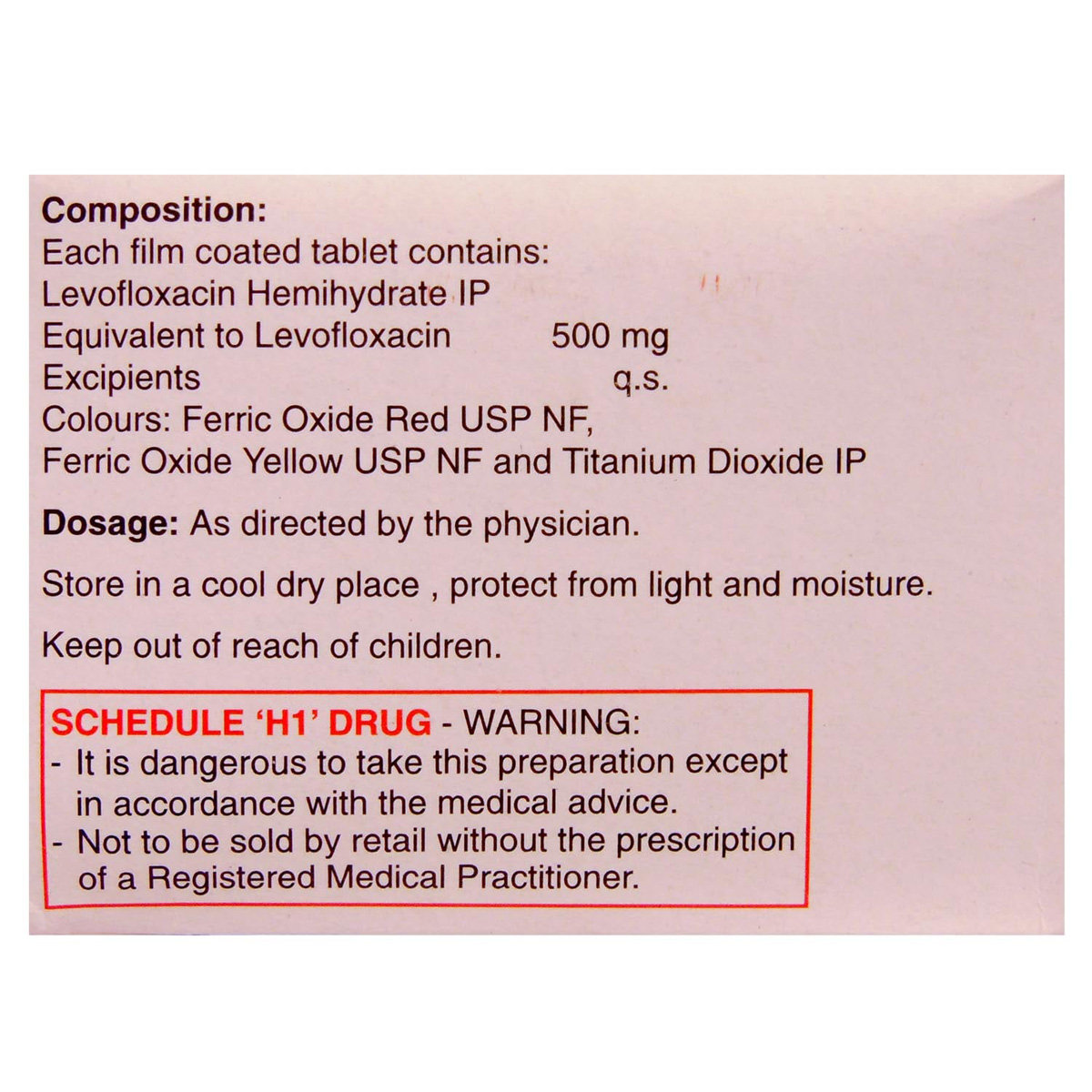



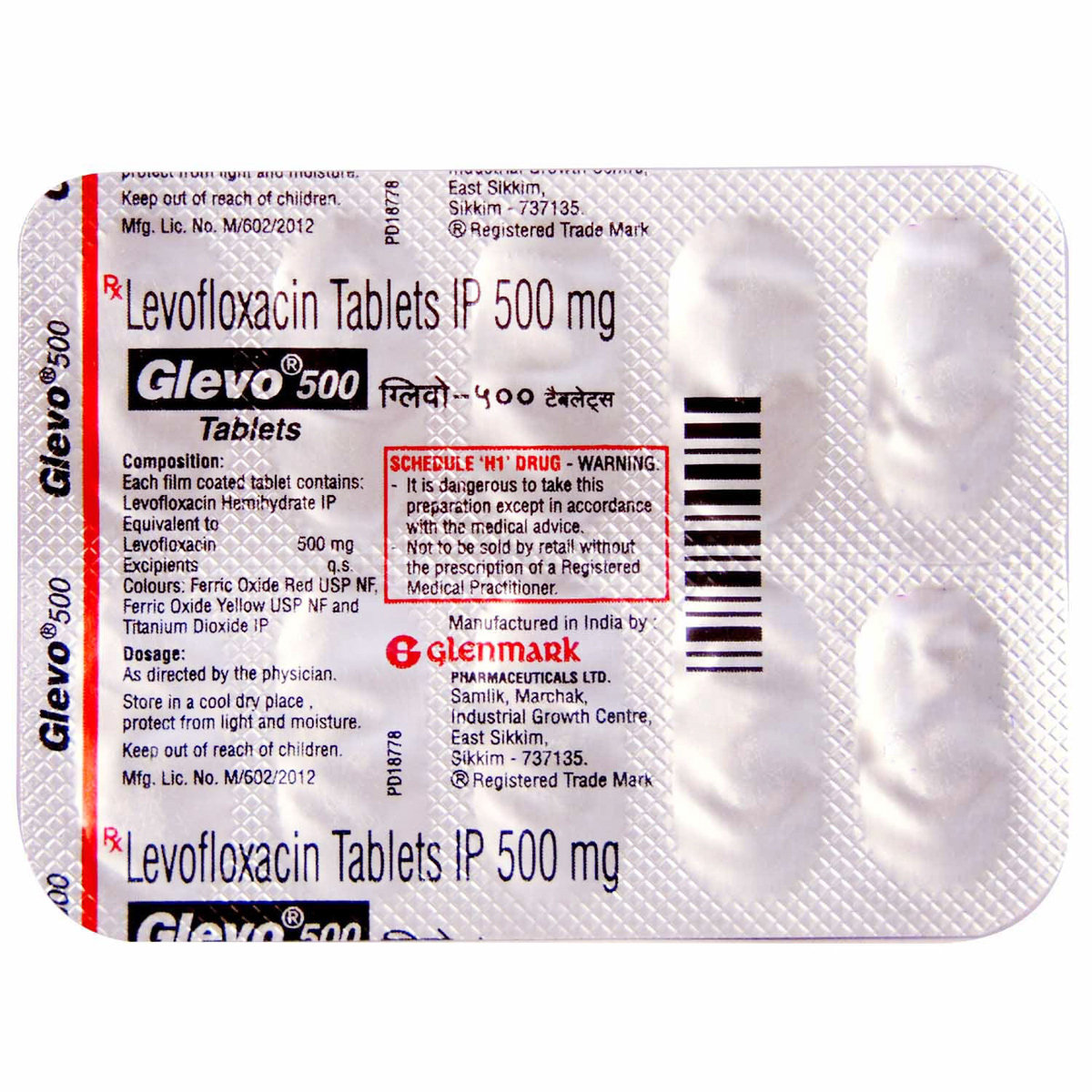
MRP ₹94
(Inclusive of all Taxes)
₹14.1 Cashback (15%)
Provide Delivery Location
Online payment accepted
 Prescription drug
Prescription drugWhats That
Composition :
Manufacturer/Marketer :
Consume Type :
Expires on or after :
Return Policy :
NPPA :
About Glevo 500 Tablet
Glevo 500 Tablet is an antibiotic that belongs to the third generation of fluoroquinolones. It is a highly effective antibiotic that works against a variety of bacteria. Glevo 500 Tablet is used in a variety of bacterial infections, most importantly acute pneumonia (Lung infection), bronchitis (Inflammation of lung passages), skin infections, as well as urinary tract infection. A bacterial infection is a condition in which bacteria grow in the body and cause infection. It can target any body part and multiple very quickly.
Bacteria that are dangerous can make you sick and replicate in your body quickly. Harmful bacteria create chemicals known as toxins that can harm the tissue and cause you sick. Glevo 500 Tablet sticks to enzymes (Topoisomerase IV & DNA gyrase) responsible for the division of bacteria & stop the process of multiplication of bacteria & hence kills bacteria.
The dose of Glevo 500 Tablet can vary depending upon your condition and the severity of the infection. Glevo 500 Tablet may cause common side effects like nausea, vomiting, indigestion, diarrhoea, constipation, trouble sleeping, and allergy. These side effects do not require immediate attention and resolve eventually. Nevertheless, if the side effects are persistent, contact your doctor.
Before starting Glevo 500 Tablet , please inform your doctor if you have any allergy (against any antibiotic), kidney or liver problems. Do not take Glevo 500 Tablet on your own as, self-medication may lead to antibiotic-resistance in which antibiotics fail to act against specific bacterial infections. And also, if prescribed by your doctor Glevo 500 Tablet is safe to use during pregnancy and breastfeeding.
Uses of Glevo 500 Tablet
Directions for Use
Key Benefits
Glevo 500 Tablet is an antibiotic that is used to treat bacterial infections resulting in pneumonia (Fluid build up in the lungs), urinary tract infection, bladder infection, prostate gland infection as well as skin infections. Glevo 500 Tablet inhibits the growth of bacteria that are then destroyed by the immune cells of our body. Glevo 500 Tablet also kills bacteria by disrupting their inner cellular contents thus fights infection, with lesser chances of causing bacterial resistance to it as compared to other antibiotics.
Storage
- Prepare for a restful night's sleep: Develop a calming pre-sleep routine, like reading or meditation, to help your body relax and prepare for sleep.
- Create a sleep-conducive Environment: Make bedroom a sleep haven by ensuring it is quiet, dark and calm.
- Follow a Sleep Schedule: Go to bed and get up at the same time every day to help regulate your body's internal clock and increase sleep quality.
- Try relaxing techniques like deep breathing, mindfulness meditation and any others.
- Limit stimulating activities before bedtime: Avoid stimulating activities before bedtime to improve sleep quality.
- Monitor Progress: Keep track of your sleep patterns to identify areas for improvement.
- Consult a doctor if needed: If these steps don't improve your sleep, consult a doctor for further guidance and therapy.
- Hydrate your body: Drink enough water to prevent dehydration and headaches.
- Calm Your Mind: Deep breathing and meditation can help you relax and relieve stress.
- Rest and Recharge: Sleep for 7-8 hours to reduce headache triggers.
- Take rest: lie down in a quiet, dark environment.
- Cold or warm compresses can help reduce tension.
- Stay Upright: Maintain good posture to keep symptoms from getting worse.
- To treat headaches naturally, try acupuncture or massage therapy.
- Over-the-counter pain relievers include acetaminophen and ibuprofen.
- Prescription Assistance: Speak with your doctor about more substantial drug alternatives.
- Severe Headaches: Seek emergency medical assistance for sudden, severe headaches.
- Frequent Headaches: If you get reoccurring headaches, consult your doctor.
- Headaches with Symptoms: Seek medical attention if your headaches include fever, disorientation, or weakness.
- Inform your doctor about dizziness symptoms. They may adjust your medication regimen or prescribe additional medications to manage symptoms.
- Follow your doctor's instructions for taking medication, and take it at the same time every day to minimize dizziness.
- When standing up, do so slowly and carefully to avoid sudden dizziness.
- Avoid making sudden movements, such as turning or bending quickly, which can exacerbate dizziness.
- Drink plenty of water throughout the day to stay hydrated and help alleviate dizziness symptoms.
- If you're feeling dizzy, sit or lie down and rest until the dizziness passes.
- Track when dizziness occurs and any factors that may trigger it, and share this information with your doctor to help manage symptoms.
- Inform your doctor about the nausea and discuss possible alternatives to the medication or adjustments to the dosage.
- Divide your daily food intake into smaller, more frequent meals to reduce nausea.
- Opt for bland, easily digestible foods like crackers, toast, plain rice, bananas, and applesauce.
- Avoid certain foods that can trigger nausea, such as fatty, greasy, spicy, and smelly foods.
- Drink plenty of fluids, such as water, clear broth, or electrolyte-rich beverages like coconut water or sports drinks.
- Use ginger (tea, ale, or candies) to help relieve nausea.
- Get adequate rest and also avoid strenuous activities that can worsen nausea.
- Talk to your doctor about taking anti-nausea medication if your nausea is severe.
- Record when your nausea occurs, what triggers it, and what provides relief to help you identify patterns and manage your symptoms more effectively.
- Take medications with food (if recommended): It can help prevent stomach distress and indigestion.
- Eat smaller, more frequent meals: Divide daily food intake into smaller, more frequent meals to ease digestion.
- Avoid trigger foods: Identify and avoid foods that trigger indigestion, such as spicy, fatty, or acidic foods.
- Stay upright after eating: Sit or stand upright for at least 1-2 hours after eating to prevent stomach acid from flowing into the oesophagus.
- Avoid carbonated drinks: Avoid drinking carbonated beverages, such as soda or beer, which can worsen indigestion.
- Manage stress: To alleviate indigestion, engage in stress-reducing activities like deep breathing exercises or meditation.
- Consult a doctor if needed: If indigestion worsens or persists, consult a healthcare professional to adjust the medication regimen or explore alternative treatments.
- Skin rash caused by allergies is due to irritants or allergens. Therefore, avoid contact with such irritants.
- Consult your doctor for proper medication and apply an anti-itch medication. Follow the schedule and use the medication whenever needed.
- Protect your skin from extreme heat and try to apply wet compresses.
- Soak in the cool bath, which gives a soothing impact to the affected area.
Drug Warnings
Drug-Drug Interactions
Drug-Drug Interactions
Login/Sign Up
The combination of Amiodarone and Glevo 500 Tablet may significantly raise the risk of an abnormal heart rhythm.
How to manage the interaction:
Despite the fact that Amiodarone and Glevo 500 Tablet interact, it can be taken if prescribed by a doctor. If you get dizziness, lightheadedness, fainting, or fast or racing heartbeats, consult a doctor. Do not stop taking any medications without visiting a doctor.
Taking Glevo 500 Tablet with Ziprasidone can increase the risk of abnormal heart rhythm.
How to manage the interaction:
Taking Glevo 500 Tablet with Ziprasidone is not recommended, but it can be taken together if prescribed by a doctor. However, consult your doctor if you experience sudden dizziness, lightheadedness, fainting, shortness of breath. Do not discontinue any medications without consulting a doctor.
Combining Glevo 500 Tablet with Disopyramide can increase the risk of irregular heart rhythm .
How to manage the interaction:
Taking Glevo 500 Tablet with Disopyramide is not recommended, as it can result in an interaction, it can be taken if your doctor has advised it. However, if you experience any symptoms like sudden dizziness, lightheadedness, fainting, or fast or pounding heartbeats, contact your doctor immediately. Do not discontinue any medications without first consulting your doctor.
Using sotalol together with Glevo 500 Tablet can increase the risk of an irregular heart rhythm that may be serious. The risk increases in patients with a history of heart illness or electrolyte imbalance.
How to manage the interaction:
Taking Glevo 500 Tablet with Sotalol is generally avoided as it can result in an interaction, it can be taken if your doctor has advised it. If you experience sudden dizziness, lightheadedness, fainting, or fast or pounding heartbeats, contact a doctor immediately. Do not discontinue any medications without consulting a doctor.
Coadministration of Glevo 500 Tablet with Haloperidol can increase the risk or severity of irregular heart rhythms. The risk increases in patients with a history of heart illness or electrolyte imbalance.
How to manage the interaction:
Taking Glevo 500 Tablet with haloperidol can result in an interaction, but it can be taken if a doctor has advised it. However, if you experience abrupt dizziness, lightheadedness, fainting, shortness of breath, or rapid heartbeat, get medical help immediately. Do not discontinue any medications without consulting a doctor.
Although it is a very rare adverse effect, taking Glevo 500 Tablet with vemurafenib increases the risk of an abnormal heart rhythm. If you're dealing with other heart illnesses, electrolyte imbalances (for example, magnesium or potassium loss likely due to serious or prolonged diarrhea or vomiting), you may be at greater risk.
How to manage the interaction:
Although concomitant administration of Glevo 500 Tablet with vemurafenib can possibly result in an interaction, it can be taken if your doctor has advised it. However, if you experience abrupt dizziness, lightheadedness, fainting, shortness of breath, or rapid heartbeat, get medical help immediately. Do not discontinue any medications without consulting a doctor.
Taking Glevo 500 Tablet with anagrelide increases the risk of an abnormal heart rhythm.
How to manage the interaction:
Concomitant administration of Glevo 500 Tablet alongside anagrelide can result in an interaction, it can be taken if a doctor has advised it. However, if you experience abrupt dizziness, lightheadedness, fainting, shortness of breath, or rapid heartbeat, get medical help immediately. Do not discontinue any medications without consulting a doctor.
Coadministration of Glevo 500 Tablet and Leflunomide can increase the risk of liver issues.
How to manage the interaction:
Although concomitant administration of Glevo 500 Tablet alongside leflunomide can result in an interaction, it can be taken if a doctor has advised it. However, if you have a fever, chills, joint pain or swelling, unusual bleeding or bruising, skin rash, itching, loss of appetite, fatigue, nausea, vomiting, abdominal pain, dark-colored urine, light-colored stools, and/or yellowing of the skin or eyes, contact the doctor right away. Do not discontinue any medications without consulting a doctor.
Coadministration of Glevo 500 Tablet and Pasireotide can increase the risk of an irregular heart rhythm.
How to manage the interaction:
Taking Glevo 500 Tablet with Pasireotide together can result in an interaction, but it can be taken if a doctor has advised it. If you have any symptoms like an irregular heartbeat, dizziness, fainting, or trouble breathing, you should call a doctor right away. Do not stop using any medications without talking to a doctor.
Using dofetilide together with Glevo 500 Tablet can increase the risk of an irregular heart rhythm.
How to manage the interaction:
Although there is a possible interaction between Glevo 500 Tablet and Dofetilide, you can take these medicines together if prescribed by a doctor. If you experience symptoms like an irregular heart rhythm, dizziness, fainting, or shortness of breath, it's important to call a doctor right away. Do not stop using any medications without a doctor's advice.
Drug-Food Interactions
Drug-Food Interactions
Login/Sign Up
Diet & Lifestyle Advise
- Dairy products such as milk and yogurt must be avoided for at least 2 hours before and after taking the medicine.
- Maintaining good hygiene is essential.
- Have more fiber-enriched food in your diet, as it can be easily digested by your gut bacteria, which helps stimulate their growth. Thus, fiber-rich foods may help restore healthy gut bacteria after a course of antibiotics.
-
After taking the full course of levofloxacin, probiotics should be taken in order to recover healthy bacteria that could have been destroyed in the intestines. The risk of antibiotic-associated diarrhea by antibiotic treatment can be minimized by taking probiotics.
Side Effects of Glevo 500 Tablet
- Nausea
- Vomiting
- Diarrhoea
- Constipation
- Indigestion
- Trouble sleeping
Habit Forming
Therapeutic Class
All Substitutes & Brand Comparisons
RX
Not for online saleFynal 500 Tablet 5's
Mankind Pharma Pvt Ltd
₹43.5
(₹7.84 per unit)
7% CHEAPERRX
Not for online saleLeon 500 Tablet 10's
Dr Reddy's Laboratories Ltd
₹92
(₹8.28 per unit)
2% CHEAPERRX
Not for online saleLevogrand 500 mg Tablet 10's
Grandcure Healthcare Pvt Ltd
₹92
(₹8.29 per unit)
2% CHEAPER
Product Substitutes
Author Details
We provide you with authentic, trustworthy and relevant information
Drug-Diseases Interactions
Drug-Diseases Interactions
Login/Sign Up
FAQs
Glevo 500 Tablet inhibits the growth of bacteria that are then destroyed by the immune cells of our body. Glevo 500 Tablet also kills bacteria by disrupting their inner cellular contents thus helps fight infection.
Diarrhoea may be caused by Glevo 500 Tablet . It is an antibiotic that destroys dangerous bacteria by killing them. Nonetheless, it also affects the beneficial bacteria in your stomach or gut and causes diarrhoea. Talk to your doctor about it if you have serious diarrhoea.
It is recommended not to stop taking this drug without completing the course as prescribed by a doctor. If a patient stops taking this drug by himself/herself, It may be difficult to treat future infections with Glevo 500 Tablet due to resistance that microbes develop on non-completion of drug course.
It is safe to use Glevo 500 Tablet alongside contraceptives; no harmful/negative interaction has been reported between them.
Drug-Drug Interactions Checker List
- SUCRALFATE
- THEOPHYLLINE
- CIMETIDINE
- PROBENECID
- CYCLOSPORINE
- INSULIN
- WARFARIN
- GLIBENCLAMIDE
Special Advise
Before starting Glevo 500 Tablet treatment a patient should take care of the following points :
- During treatment and after 48 hours of discontinuation of treatment with Glevo 500 Tablet , limit exposure to heavy sunlight or to artificial UV rays (e.g. sunlight).
- Before using eye drops of Glevo 500 Tablet , remove the contact lenses and wait at least 15 minutes before reinsertion.
- Monitor liver function test (LFT), renal function test, white blood cell count, and blood glucose level in diabetic patients as Glevo 500 Tablet may cause harmful interactions in these patients.
Disease/Condition Glossary
A bacterial infection is a condition in which harmful bacteria enter, multiply, and infect our bodies. It can target any body part and multiple very quickly. When you get infected with bacteria, you can experience generalized symptoms like fevers, chills, and fatigue. Bacteria are of various forms comprising commonly of spherical, rod, and spiral-shaped. Bacterial infections vary from minor illnesses like sore throat and ear infections to severe brain infections like meningitis and encephalitis. Few harmful bacteria that cause infections include Streptococcus, Staphylococcus and E. coli. Anyone can become infected with a bacterial infection. People with weak immune systems or taking immunosuppressive medicine can make them more prone to bacterial infection.

Have a query?
Buy best Infections & Infestation products by
Cipla Ltd
Macleods Pharmaceuticals Ltd
Alkem Laboratories Ltd
Lupin Ltd
Abbott India Ltd
Sun Pharmaceutical Industries Ltd
Mankind Pharma Pvt Ltd
Micro Labs Ltd
Aristo Pharmaceuticals Pvt Ltd
FDC Ltd
Intas Pharmaceuticals Ltd
Glenmark Pharmaceuticals Ltd
Ipca Laboratories Ltd
Torrent Pharmaceuticals Ltd
Zydus Healthcare Ltd
Biochem Pharmaceutical Industries Ltd
Zuventus Healthcare Ltd
United Biotech Pvt Ltd
Hetero Drugs Ltd
Emcure Pharmaceuticals Ltd
Alembic Pharmaceuticals Ltd
Indoco Remedies Ltd
Fusion Health Care Pvt Ltd
Dr Reddy's Laboratories Ltd
Leeford Healthcare Ltd
Cadila Healthcare Ltd
Wockhardt Ltd
Zydus Cadila
GlaxoSmithKline Pharmaceuticals Ltd
Morepen Laboratories Ltd
Blue Cross Laboratories Pvt Ltd
Cadila Pharmaceuticals Ltd
Converge Biotech Pvt Ltd
Elder Pharmaceuticals Ltd
Hetero Healthcare Pvt Ltd
Pfizer Ltd
AAA Pharma Trade Pvt Ltd
Gufic Bioscience Ltd
Mylan Pharmaceuticals Pvt Ltd
Corona Remedies Pvt Ltd
Wallace Pharmaceuticals Pvt Ltd
Apex Laboratories Pvt Ltd
Medishri Healthcare Pvt Ltd
Akumentis Healthcare Ltd
Alniche Life Sciences Pvt Ltd
Hegde & Hegde Pharmaceutica Llp
Veritaz Healthcare Ltd
Ranbaxy Laboratories Ltd
Koye Pharmaceuticals Pvt Ltd
Shreya Life Sciences Pvt Ltd
Overseas Health Care Pvt Ltd
Biocon Ltd
Indchemie Health Specialities Pvt Ltd
Medley Pharmaceuticals Ltd
Brinton Pharmaceuticals Ltd
J B Chemicals & Pharmaceuticals Ltd
Unifaith Biotech Pvt Ltd
Ajanta Pharma Ltd
Biochemix Health Care Pvt Ltd
Natco Pharma Ltd
Samarth Life Sciences Pvt Ltd
Unichem International
Laborate Pharmaceuticals India Ltd
Unipark Biotech Pvt Ltd
Zymes Bioscience Pvt Ltd
Indiabulls Pharmaceuticals Pvt Ltd
Neon Laboratories Ltd
Vasu Organics Pvt Ltd
DR Johns Lab Pharma Pvt Ltd
East West Pharma India Pvt Ltd
La Renon Healthcare Pvt Ltd
Medgen Drugs And Laboratories Pvt Ltd
Novartis India Ltd
Canixa Life Sciences Pvt Ltd
Icarus Health Care Pvt Ltd
Lincoln Pharmaceuticals Ltd
Celon Laboratories Pvt Ltd
Concept Pharmaceuticals Ltd
Klm Laboratories Pvt Ltd
Nicholas Piramal India Ltd
Systopic Laboratories Pvt Ltd
Yuventis Pharmaceuticals
Capital Pharma
German Remedies Ltd
Pristine Pearl Pharma Pvt Ltd
Unison Pharmaceuticals Pvt Ltd
Aurz Pharmaceutical Pvt Ltd
Clover Health Care Pharma
Kepler Healthcare Pvt Ltd
Allites Life Sciences Pvt Ltd
Auspharma Pvt Ltd
Intra Life Pvt Ltd
Jolly Healthcare
Linux Laboratories Pvt Ltd
Ozone Pharmaceuticals Ltd
Cachet Pharmaceuticals Pvt Ltd
Comed Chemicals Ltd
Delcure Life Sciences Ltd
Fresenius Kabi India Pvt Ltd
Khandelwal Laboratories Pvt Ltd
Alcohol
Safe if prescribed
Alcohol is not known to cause any unpleasant side effects if taken along with Glevo 500 Tablet . But intake of alcohol with Glevo 500 Tablet may damage your liver. So intake of Glevo 500 Tablet should be avoided with Glevo 500 Tablet .
Pregnancy
Consult your doctor
It is not known whether Glevo 500 Tablet will affect pregnant women or fetus or not. Hence, the intake of Glevo 500 Tablet should be avoided if you are pregnant or planning to become pregnant unless your doctor recommends otherwise.
Breast Feeding
Consult your doctor
Before taking this drug doctor's consultation is mandatory.Glevo 500 Tablet is excreted in human milk. But the amount of Glevo 500 Tablet absorbed by the nursing infant is unknown.
Driving
Safe if prescribed
After taking this drug, you can experience side effects like feeling dizzy, tired, and a spinning sensation (vertigo) or alterations in your vision. If this occurs, do not drive or perform any work that requires high level of concentration.
Liver
Consult your doctor
Glevo 500 Tablet to be taken with caution, especially if you have a history of liver diseases/conditions. The dose may have to be adjusted by your doctor.
Kidney
Consult your doctor
Glevo 500 Tablet to be taken with caution, especially if you have a history of Kidney diseases/conditions. The dose may have to be adjusted by your doctor.
Children
Safe if prescribed
Glevo 500 Tablet can be given to children but under medical supervision. Glevo 500 Tablet is prescribed to the children to treat complicated urinary tract infections, anthrax infection or plague infection.


